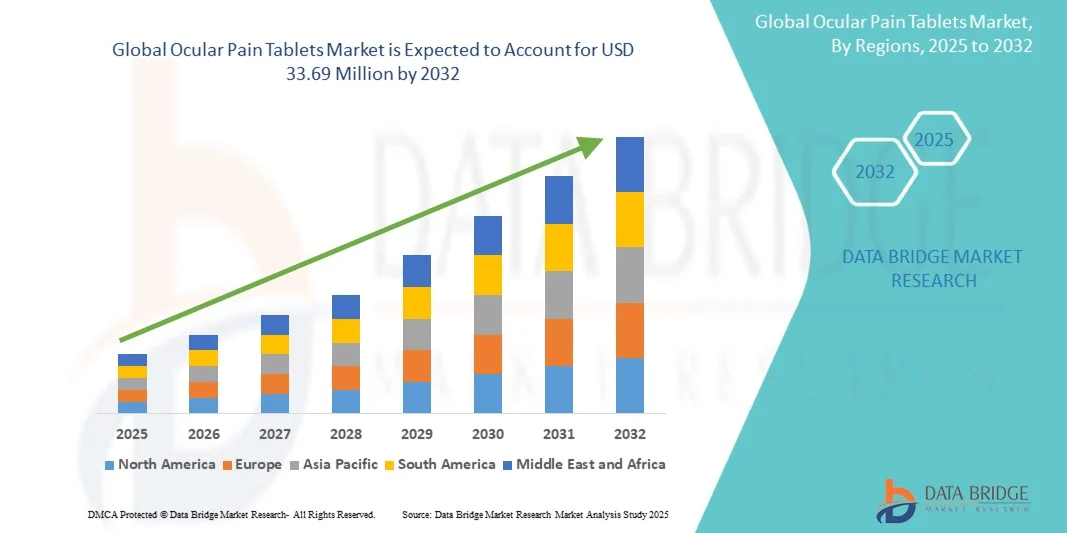Introduction
Eye pain is one of those discomforts that can disrupt daily life instantly. Whether it’s a sharp, stabbing sensation, a dull ache behind the eyes, or irritation caused by dryness and strain, ocular pain often requires swift relief. In some cases, over-the-counter drops and rest may be enough. However, when pain is more persistent, doctors may recommend ocular pain tablets – systemic medications designed to target the underlying cause of discomfort. But how do these tablets actually work? And what benefits can patients expect from them? Let’s explore the mechanisms of ocular pain tablets and why they’re an important option for eye health management.
Definition
Ocular Pain Tablets are oral medications formulated to help relieve discomfort, irritation, or pain in and around the eyes, which may result from conditions such as eye strain, infections, inflammation, surgery, or injury. These tablets typically contain analgesic, anti-inflammatory, or antihistamine agents that work systemically to reduce pain, swelling, or allergic reactions affecting the eyes. They are usually prescribed by a healthcare professional and should be taken according to medical guidance, as their effectiveness and safety depend on the underlying cause of ocular pain.
Understanding Ocular Pain
Before diving into tablets, it’s important to clarify what we mean by ocular pain. Broadly, ocular pain falls into two categories:
- Superficial eye pain – Often caused by issues on the surface of the eye, such as dry eye syndrome, conjunctivitis, or corneal abrasions.
- Deep eye pain – Linked to internal or neurological issues, such as glaucoma, uveitis, optic neuritis, or migraine-related eye pain.
Pain can also be classified as nociceptive (triggered by tissue damage or irritation) or neuropathic (caused by nerve dysfunction or misfiring). Because of this complexity, no single medication can address all forms of eye pain. This is why ocular pain tablets come in different categories with different mechanisms of action.
Mechanisms of Ocular Pain Tablets
Unlike eye drops that act locally, tablets work systemically. They’re absorbed into the bloodstream, circulate through the body, and exert effects on the nervous system, inflammation pathways, or pain perception. Here are the main mechanisms at play:
1. Anti-Inflammatory Action
Many ocular pain tablets belong to the non-steroidal anti-inflammatory drug (NSAID) class, such as ibuprofen or naproxen. These medications:
- Block enzymes called cyclooxygenase (COX-1 and COX-2).
- Reduce the production of prostaglandins, which are chemical messengers that trigger inflammation, swelling, and pain.
- Relieve ocular pain caused by inflammatory conditions like scleritis, uveitis, or post-surgical irritation.
By lowering inflammation systemically, NSAIDs not only ease pain but can also reduce redness and swelling in and around the eye.
-
Pain Signal Modulation
Some ocular pain has less to do with inflammation and more to do with nerve signaling. For such cases, medications that alter pain perception in the central nervous system are used.
- Acetaminophen (paracetamol): Works by inhibiting pain signals in the brain and spinal cord, though its exact mechanism is still not fully understood.
- Neuropathic pain medications (gabapentin, pregabalin): Reduce hyperactive nerve firing, making them helpful in chronic ocular pain conditions with a neuropathic component.
These drugs don’t necessarily treat the source of pain, but they change how the brain interprets pain signals, offering relief in otherwise stubborn cases.
-
Muscle Relaxation and Vascular Effects
Certain ocular pains, especially those related to migraines or eye strain, can benefit from medications that affect blood vessels or muscle tension.
- Triptans (for migraine-related eye pain) act on serotonin receptors, constricting dilated blood vessels around the brain and reducing pressure that can radiate to the eyes.
- Muscle relaxants may be prescribed in rare cases when eye pain is linked to tension in surrounding facial or ocular muscles.
These mechanisms illustrate that not all ocular pain comes directly from the eyeball—it can be referred pain from surrounding structures.
-
Steroidal Mechanisms
In severe inflammatory eye conditions, doctors may prescribe oral corticosteroids like prednisone. These:
- Suppress the immune response by inhibiting multiple inflammatory pathways.
- Reduce swelling and tissue damage caused by autoimmune or infectious ocular diseases.
- Provide rapid relief for conditions like optic neuritis, severe uveitis, or orbital cellulitis.
However, because of their potential side effects (weight gain, mood changes, bone thinning), they are generally reserved for short-term or severe cases.
-
Combination Therapy
In many cases, ocular pain management doesn’t rely on just one type of tablet. Doctors often combine systemic tablets with topical treatments such as lubricating drops, steroid drops, or antibiotic drops. This multimodal approach helps tackle both the underlying cause and the symptom of pain.
Benefits of Ocular Pain Tablets
So, what are the main advantages of using oral medications for eye pain compared to other treatment options?
1. Broad and Systemic Relief
Unlike eye drops that act locally, tablets affect the entire body. This is particularly useful when:
- The pain stems from deeper structures in or around the eye.
- There are associated systemic conditions (like autoimmune diseases) that need whole-body treatment.
2. Targeting Multiple Causes
Ocular pain isn’t always straightforward. It can result from a mix of inflammation, nerve dysfunction, and vascular issues. Tablets offer flexibility, as different drug classes can target each of these mechanisms.
3. Convenience
For many patients, swallowing a tablet is more convenient than instilling drops multiple times per day. This can improve compliance, especially in chronic conditions.
4. Synergistic Effects with Other Therapies
When used alongside drops, lifestyle changes, or minor procedures, tablets can enhance overall pain control and help speed recovery.
5. Potential for Preventive Use
Some tablets (like migraine medications or neuropathic pain drugs) can reduce the frequency and severity of ocular pain episodes rather than just treating flare-ups.
Limitations and Considerations
While ocular pain tablets provide important benefits, they are not without risks or drawbacks. Patients and practitioners should be mindful of the following:
- Side effects: NSAIDs can irritate the stomach, cause kidney issues, or increase cardiovascular risk. Steroids can affect metabolism, bone health, and mood.
- Not always first-line: For mild surface-level pain, artificial tears or topical treatments are usually preferred before oral medications.
- Underlying cause matters: Pain relief is not the same as treatment. Tablets may reduce discomfort but do not cure infections, injuries, or progressive eye diseases.
- Individual variation: Some patients respond better to certain medications than others, depending on the source and nature of their pain.
Because of these factors, ocular pain tablets should always be taken under medical guidance, ideally from an ophthalmologist or neurologist familiar with the condition.
Future Directions in Ocular Pain Management
Research into ocular pain management is ongoing. Newer approaches include:
- Targeted nerve therapies: Drugs designed to block specific nerve channels involved in ocular neuropathic pain.
- Safer anti-inflammatories: Medications that reduce pain and inflammation without the gastrointestinal or cardiovascular risks of traditional NSAIDs.
- Personalized medicine: Genetic testing and biomarkers may one day help doctors match patients with the most effective pain medication for their specific condition.
These advances could improve both the efficacy and safety of ocular pain treatment.
Growth Rate of Ocular Pain Tablets Market
According to Data Bridge Market Research, the size of the global ocular pain tablets market was estimated at USD 18.60 million in 2024 and is projected to grow at a compound annual growth rate (CAGR) of 7.71% to reach USD 33.69 million by 2032.
Learn More: https://www.databridgemarketresearch.com/reports/global-ocular-pain-tablets-market
Conclusion
Ocular pain tablets work by targeting the biological pathways behind discomfort—whether that’s inflammation, nerve signaling, muscle tension, or immune activity. They provide systemic relief, making them especially valuable for deep or complex eye conditions that cannot be addressed by eye drops alone.





